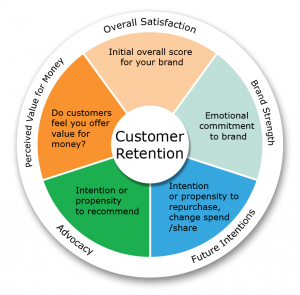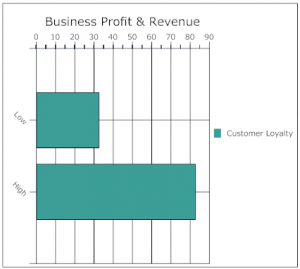
Are you aware that it is six (6) times more expensive to acquire a new client than it is to retain an existing client?
Keeping clients onboard and engaged with your business is just as important as your sales team finding new business sales with new and existing clients, however many businesses do not pay enough attention to the back end of their business leaving client retention to chance.
Have you ever mapped the whole value chain of your business and looked at where your clients engage with your company?
How many client touch points are there?
The more client touch points there are across your business the more chances you have of either:
- impressing your clients and keeping them engaged with your business due to great service, great solutions, great ideas and due respect for your clients’ custom OR
- losing them out the back door due to poor service, poor communications, non-user friendly systems and resources, difficult complaints handling procedures or just plain indifference on the part of the client services team or other departments
 Too many business leaders complain about poor sales results yet they don’t address a major sales issue – the retention of existing clients and repeat business. For example, one Barrett client reported recently that their sales team brought in 4,500 new accounts in one year while their service/operational teams lost just over 4,000 accounts because of poor service and indifference to client priorities – ‘It’s not my job’ was the catch cry down the line. Fed up and frustrated their clients just stopped doing business with that company and no one asked why… until recently and now the real reason for declining Sales Growth is emerging. This company is not alone – losing good quality sales and clients due to disconnected or disengaged staff beyond the sales team is a real problem.
Too many business leaders complain about poor sales results yet they don’t address a major sales issue – the retention of existing clients and repeat business. For example, one Barrett client reported recently that their sales team brought in 4,500 new accounts in one year while their service/operational teams lost just over 4,000 accounts because of poor service and indifference to client priorities – ‘It’s not my job’ was the catch cry down the line. Fed up and frustrated their clients just stopped doing business with that company and no one asked why… until recently and now the real reason for declining Sales Growth is emerging. This company is not alone – losing good quality sales and clients due to disconnected or disengaged staff beyond the sales team is a real problem.
So before you lay blame solely on your sales team for declining sales you may like to look at the following information:
– Over 68% of clients leave a business because they are upset with the treatment they have received from the people in that business.
– However, between 54-70% of clients who complain will nevertheless continue to be clients if their complaint is resolved effectively and respectfully.
Prior to the internet one study revealed that happy clients, or clients who have their complaints satisfactorily resolved, told 3 to 5 people while one unhappy client told eleven people, who in turn told five other people. Now clients can tell about their experiences with suppliers and service providers to hundreds and thousands of people in an instant using social media. The exact numbers are not specific but with technologies like Twitter and FaceBook companies reputations and brands can be made or broken by client feedback almost instantly.
Clients have more options than ever before and if sales and service experiences are poor they will feel less loyalty as a result. Clients want products and services faster, cheaper and better from whoever will provide them. That means that as a sales and service provider, the competitive advantage for your company rests with you and your people across the entire value chain.
Client loyalty develops as clients feel a connection with a company and its staff. After all, most companies have the same “stuff”; it’s the genuine understanding of someone’s needs and priorities, the effective delivery of products and services that meet and satisfy those needs, and the genuine offer of service that causes product and company differentiation.
Organisations that provide superior sales and service experiences can charge more, create greater profits and achieve greater market share, because clients will generally perceive more value and be willing to pay a premium for superior advice and service.
When companies have a commitment to sales and service across their entire value chain it raises the bar of competition. The only way companies can effectively accomplish this is through their employees. As the competitive bar goes up, the quality of employees must go up equally.
Having a better team is good for the individual employee, good for the company and very good for the client. When a company is committed to a proactive sales and service culture, its corporate culture will change to absorb this new dimension, first becoming an integral part, and then becoming the driving force causing amazing results to take place.
The subsequent culture is automatic and infectious. Employees will demand it of new employees, and the corporate culture becomes even stronger because employees have taken ownership.
If you want client loyalty and repeat sales you need to make sure that everyone in your business understands: That selling is everybody’s business and everybody lives by selling something.
Remember everybody lives by selling something.
Author: Sue Barrett, www.barrett.com.au



New Article Email Notification